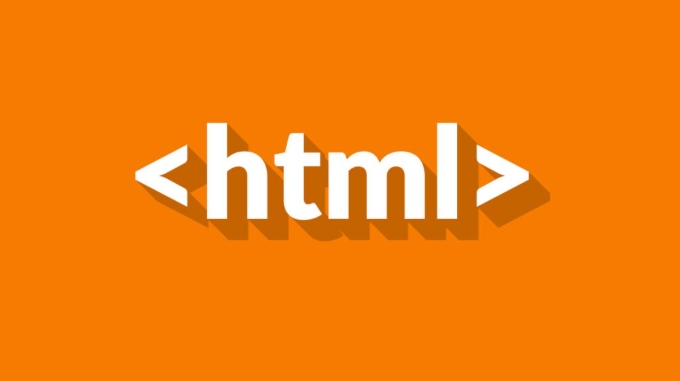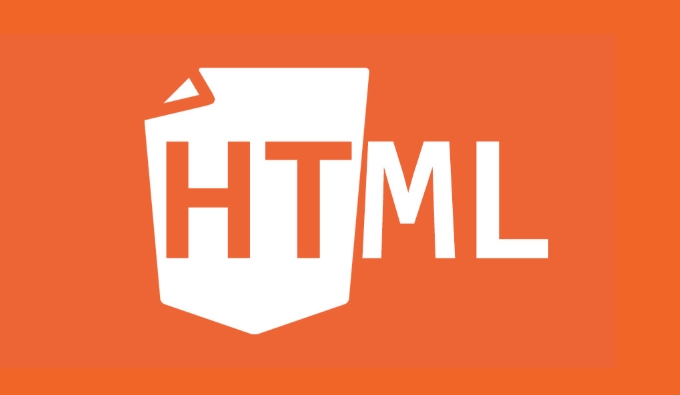The sandbox property of an iframe improves web page security by restricting the permissions of embedded content. Its core function is to prevent the content in the iframe from performing operations such as accessing cookies, executing scripts, etc., and the usage method is to add sandbox attributes, such as <iframe src="example.html" sandbox></iframe>. Optional values include allow-same-origin, allow-scripts, allow-forms, etc., which are used to open permissions on demand, such as allowing scripts and forms to be submitted but prohibiting pop-ups: sandbox="allow-scripts allow-forms". Recommended usage includes configuring reasonable permissions based on content type, such as ad space recommendations allow-scripts and allow-forms, and gadget recommendations plus allow-same-origin. At the same time, it is necessary to note that sandbox should not be used as the only security line. It also needs to combine CSRF protection, input filtering and other measures to test browser compatibility. In short, using sandbox rationally can effectively reduce the risk of XSS and click hijacking.

The sandbox attribute of iframe is a practical tool to improve web page security. It prevents malicious content from performing dangerous actions by restricting the behavior of embedded pages. This attribute is very useful if you want to control your third-party content or ads when using them.

Basic function: Restrict the permissions of content in iframes
By default, content in iframe may have the same security permissions as the main page, such as accessing cookies, executing scripts, submitting forms, etc. After adding the sandbox attribute, the browser will restrict these behaviors.
You can use this:

<iframe src="example.html" sandbox></iframe>
As long as this attribute is added, the content in the iframe will be "sandboxed" - even if it comes from a homologous or untrusted source, the page cannot be operated at will.
Optional value: Open permissions on demand
sandbox attribute is not either on or off. It supports multiple optional values to gradually release certain permissions. Common ones include:

-
allow-same-origin: Allows iframe content to be treated as the same origin as the main page (otherwise it will be processed as passive content) -
allow-scripts: allows script execution -
allow-forms: Allow submission of forms -
allow-popups: Allow popups -
allow-downloads: Allow downloads to download files -
allow-pointer-lock: Allows the use of Pointer Lock API (for games, etc.)
For example, if you want to allow scripts to run and form submission, but disable popups:
<iframe src="example.html" sandbox="allow-scripts allow-forms"></iframe>
Note: Without
allow-same-origin, the content in the iframe will not be accessible to cookies or local storage, which is a very critical security guarantee in some scenarios.
Use suggestions: Set reasonable permissions based on content type
When using sandbox , the most important thing is to minimize authorization , that is, only give the function permissions required by the iframe. The following are the recommended configurations for several common scenarios:
Advertising space : Usually, you do not need to access the main page information or pop-up windows. You can only allow scripts and forms:
sandbox="allow-scripts allow-forms"
Embed external widget : If it depends on a homologous context (such as login status), you need to add
allow-same-origin:sandbox="allow-scripts allow-same-origin"
Content that is totally trusted : This is less case, but it is still recommended to keep some restrictions for increased security.
- Don't fully trust content provided by users;
- CSRF protection is still required for sensitive operations;
- Input filtering and permission control should also be done on the server side.
Security reminder: Don't rely on sandbox as the only line of defense
Although sandbox is a powerful security mechanism, it cannot replace other security measures. for example:
In addition, different browsers have slightly different support for sandbox , especially some older browsers may not support certain options. It is best to test whether the behaviors in mainstream browsers are consistent before going online.
Basically that's it. Using sandbox well can effectively reduce the risks of XSS and click hijacking without affecting the functional experience.
The above is the detailed content of HTML `iframe` Sandbox Attribute Explained. For more information, please follow other related articles on the PHP Chinese website!

Hot AI Tools

Undress AI Tool
Undress images for free

Undresser.AI Undress
AI-powered app for creating realistic nude photos

AI Clothes Remover
Online AI tool for removing clothes from photos.

Clothoff.io
AI clothes remover

Video Face Swap
Swap faces in any video effortlessly with our completely free AI face swap tool!

Hot Article

Hot Tools

Notepad++7.3.1
Easy-to-use and free code editor

SublimeText3 Chinese version
Chinese version, very easy to use

Zend Studio 13.0.1
Powerful PHP integrated development environment

Dreamweaver CS6
Visual web development tools

SublimeText3 Mac version
God-level code editing software (SublimeText3)
 Applying Semantic Structure with article, section, and aside in HTML
Jul 05, 2025 am 02:03 AM
Applying Semantic Structure with article, section, and aside in HTML
Jul 05, 2025 am 02:03 AM
The rational use of semantic tags in HTML can improve page structure clarity, accessibility and SEO effects. 1. Used for independent content blocks, such as blog posts or comments, it must be self-contained; 2. Used for classification related content, usually including titles, and is suitable for different modules of the page; 3. Used for auxiliary information related to the main content but not core, such as sidebar recommendations or author profiles. In actual development, labels should be combined and other, avoid excessive nesting, keep the structure simple, and verify the rationality of the structure through developer tools.
 Implementing Clickable Buttons Using the HTML button Element
Jul 07, 2025 am 02:31 AM
Implementing Clickable Buttons Using the HTML button Element
Jul 07, 2025 am 02:31 AM
To use HTML button elements to achieve clickable buttons, you must first master its basic usage and common precautions. 1. Create buttons with tags and define behaviors through type attributes (such as button, submit, reset), which is submitted by default; 2. Add interactive functions through JavaScript, which can be written inline or bind event listeners through ID to improve maintenance; 3. Use CSS to customize styles, including background color, border, rounded corners and hover/active status effects to enhance user experience; 4. Pay attention to common problems: make sure that the disabled attribute is not enabled, JS events are correctly bound, layout occlusion, and use the help of developer tools to troubleshoot exceptions. Master this
 Configuring Document Metadata Within the HTML head Element
Jul 09, 2025 am 02:30 AM
Configuring Document Metadata Within the HTML head Element
Jul 09, 2025 am 02:30 AM
Metadata in HTMLhead is crucial for SEO, social sharing, and browser behavior. 1. Set the page title and description, use and keep it concise and unique; 2. Add OpenGraph and Twitter card information to optimize social sharing effects, pay attention to the image size and use debugging tools to test; 3. Define the character set and viewport settings to ensure multi-language support is adapted to the mobile terminal; 4. Optional tags such as author copyright, robots control and canonical prevent duplicate content should also be configured reasonably.
 Best HTML tutorial for beginners in 2025
Jul 08, 2025 am 12:25 AM
Best HTML tutorial for beginners in 2025
Jul 08, 2025 am 12:25 AM
TolearnHTMLin2025,chooseatutorialthatbalanceshands-onpracticewithmodernstandardsandintegratesCSSandJavaScriptbasics.1.Prioritizehands-onlearningwithstep-by-stepprojectslikebuildingapersonalprofileorbloglayout.2.EnsureitcoversmodernHTMLelementssuchas,
 HTML for email templates tutorial
Jul 10, 2025 pm 02:01 PM
HTML for email templates tutorial
Jul 10, 2025 pm 02:01 PM
How to make HTML mail templates with good compatibility? First, you need to build a structure with tables to avoid using div flex or grid layout; secondly, all styles must be inlined and cannot rely on external CSS; then the picture should be added with alt description and use a public URL, and the buttons should be simulated with a table or td with background color; finally, you must test and adjust the details on multiple clients.
 How to associate captions with images or media using the html figure and figcaption elements?
Jul 07, 2025 am 02:30 AM
How to associate captions with images or media using the html figure and figcaption elements?
Jul 07, 2025 am 02:30 AM
Using HTML sums allows for intuitive and semantic clarity to add caption text to images or media. 1. Used to wrap independent media content, such as pictures, videos or code blocks; 2. It is placed as its explanatory text, and can be located above or below the media; 3. They not only improve the clarity of the page structure, but also enhance accessibility and SEO effect; 4. When using it, you should pay attention to avoid abuse, and apply to content that needs to be emphasized and accompanied by description, rather than ordinary decorative pictures; 5. The alt attribute that cannot be ignored, which is different from figcaption; 6. The figcaption is flexible and can be placed at the top or bottom of the figure as needed. Using these two tags correctly helps to build semantic and easy to understand web content.
 What are the most commonly used global attributes in html?
Jul 10, 2025 am 10:58 AM
What are the most commonly used global attributes in html?
Jul 10, 2025 am 10:58 AM
class, id, style, data-, and title are the most commonly used global attributes in HTML. class is used to specify one or more class names to facilitate style setting and JavaScript operations; id provides unique identifiers for elements, suitable for anchor jumps and JavaScript control; style allows for inline styles to be added, suitable for temporary debugging but not recommended for large-scale use; data-properties are used to store custom data, which is convenient for front-end and back-end interaction; title is used to add mouseover prompts, but its style and behavior are limited by the browser. Reasonable selection of these attributes can improve development efficiency and user experience.
 How to handle forms submission in HTML without a server?
Jul 09, 2025 am 01:14 AM
How to handle forms submission in HTML without a server?
Jul 09, 2025 am 01:14 AM
When there is no backend server, HTML form submission can still be processed through front-end technology or third-party services. Specific methods include: 1. Use JavaScript to intercept form submissions to achieve input verification and user feedback, but the data will not be persisted; 2. Use third-party serverless form services such as Formspree to collect data and provide email notification and redirection functions; 3. Use localStorage to store temporary client data, which is suitable for saving user preferences or managing single-page application status, but is not suitable for long-term storage of sensitive information.






